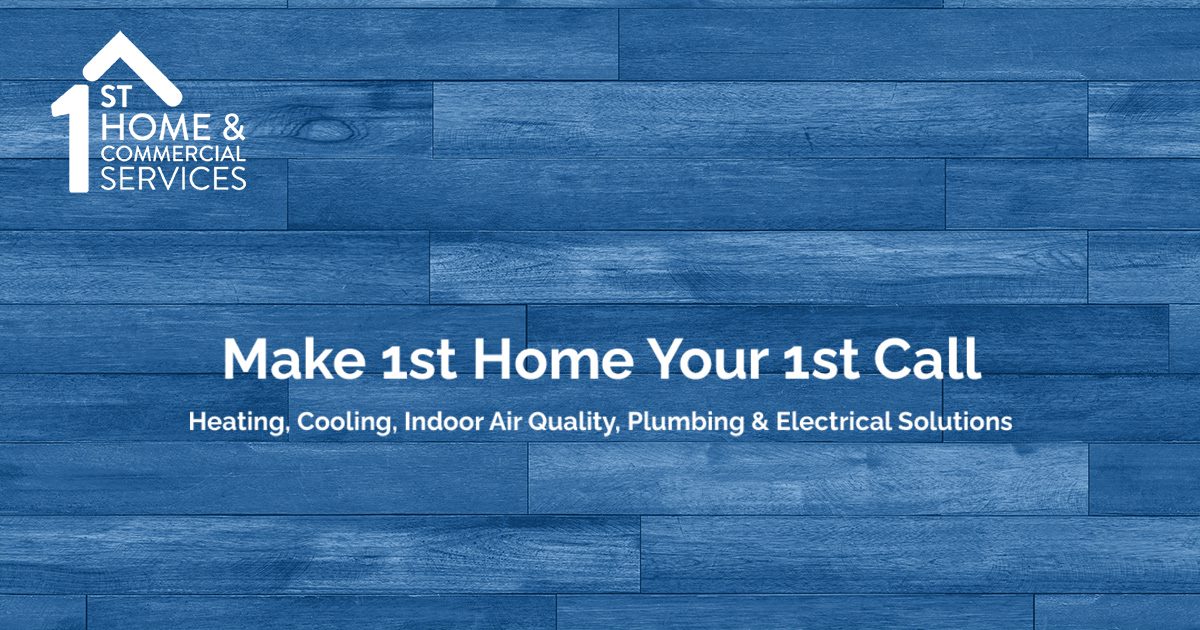You step into the shower after a long day, ready to release some of the tension in your shoulders with the heavy pressure of the water, but what comes out is . . . less than satisfactory. If it’s not your shower, maybe it’s your kitchen sink or even your garden hose, but the frustration is the same. Low water pressure disrupts our lives and makes many tasks a good deal less convenient. So, what’s the deal? Austin plumbers have a few ideas to help solve your pressure problems.
Causes of Low Water Pressure
If you’ve noticed that the water pressure in your house is low or becoming lower over time – relax. You’re not alone. And the good news is, once the problem is identified, the fix should be a fairly easy one. 1st Home and Commercial Services are licensed plumbers in Austin, TX who are well versed in helping homeowners identify and address pressure points in their home plumbing systems.
There are many possible causes of low water pressure:
- The main water line supplying your home could have a kink in it that’s restricting water flow
- That line could be partially obstructed with deposits
- You may have an inline water filter that’s clogged with debris
- If your home is older and has galvanized iron water pipes, the horizontal pipes that run under floor joists could also be clogged.
Some people experience low water pressure in showers, and kitchen and bathroom faucets. To comply with federal water-use regulations, shower heads contain flow restrictors. Unfortunately, tiny pieces of sediment can clog the openings in these restrictors, and when enough openings are clogged, water pressure drops quickly.
Water pressure drops significantly at a kitchen and bathroom vanity faucets for the same reason. But in this case, the pieces of sediment clog holes in the aerator that creates the uniform flow of water.
Shutoff valves within your system could also be causing the problem. Perhaps someone turned down the main shutoff valve at your house for a repair, and didn’t open it up fully after they finished the repair.
Your home water pressure might also be suffering because of a faulty water pressure relief valve. You can determine this by installing a water pressure gauge on each side of the pressure relief valve or a pressure-reducing valve.
Low Water Pressure Troubleshooting
Clean Your Aerator Screens
If the issue seems to be localized to one particular faucet or showerhead, there may be buildup in the aerator screen. These screens are designed to filter out debris, so it’s no surprise that they eventually become clogged, reducing pressure. Luckily, it’s an easy fix: remove the screen, soak it in white vinegar for a few hours, then replace it.
Check Your Shower Head
Again, this might be the issue if the low pressure is confined to a single spot, and that single spot happens to be your shower. How long has that shower-head been there? If it’s so long you can’t remember, it might be time for a replacement.
Pipe Dreams
If your aerators are debris-free and you still can’t get the pressure you crave, it’s time to look deeper: the problem might be buildup or corrosion in your pipes. Pipes can become clogged with dirt or sand when a water main breaks, or they can experience buildup from mineral deposits in the water. Either way, your residential plumber probably has a chemical fix that can get things flowing smoothly again. Corrosion, unfortunately, is a bigger issue and will likely require replacement of the old pipes. It’s an expensive and time-consuming process, but usually yields impressive improvement.
Look for Leaks
If you’ve got a leak, not only are you losing out on the water pressure game, you’re also losing money. Check for leaks by turning off all the taps inside and outside your home and making note of your meter reading. If, after a few hours, the meter is still increasing, you probably need to call a plumber for repairs.
What’s the Time?
It’s possible that nothing at all is wrong with your plumbing; the problem may lie in your schedule. If everyone in your neighborhood has timed their morning showers for the same peak period, that could result in a water pressure drop. Changing your schedule isn’t an option for many of us, but if you’re one of the lucky few, try your shower while most people are at work and see if that makes a difference.
Municipal Malfunction
Along similar lines, there might be a problem before the water even gets to you. Your city’s water supply might be traveling through pipes that are clogged or leaking. If you can’t find the source of the issue in your own home, contact your local water supply company to see if they’re aware of a more widespread issue (and what they’re doing to fix it).
The Pressure’s On!
Some pressure problems can be fixed with a little elbow grease, but most of the issues above require a trained residential plumber to properly repair. If you’re experiencing water pressure woes, call your Austin plumber today and let them restore your shower bliss.


